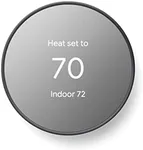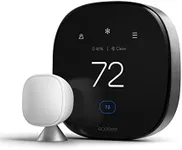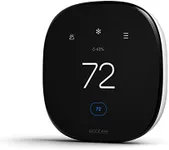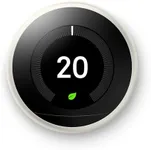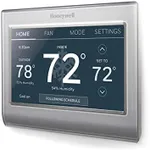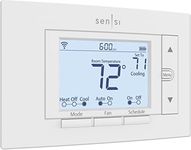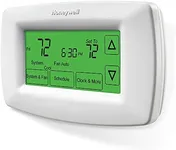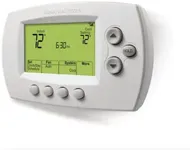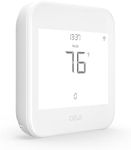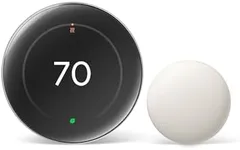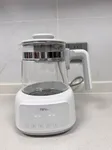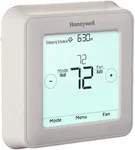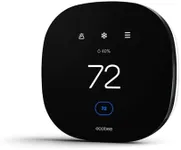Buying Guide for the Best Thermostats For Homes
Choosing the right thermostat for your home can significantly impact your comfort and energy efficiency. A thermostat regulates the temperature of your home by controlling your heating and cooling systems. With various models available, it's essential to understand the key features and specifications to find the best fit for your needs. Here are some important factors to consider when selecting a thermostat for your home.Type of ThermostatThermostats come in different types: manual, programmable, and smart. Manual thermostats are the most basic and require you to adjust the temperature settings manually. Programmable thermostats allow you to set schedules for different times of the day, which can help save energy by reducing heating or cooling when you're not home. Smart thermostats offer advanced features like remote control via smartphone apps, learning your schedule, and integrating with other smart home devices. Choose a manual thermostat if you prefer simplicity, a programmable one if you want to save energy with scheduled settings, or a smart thermostat if you want the convenience of remote control and advanced features.
CompatibilityCompatibility refers to whether the thermostat will work with your existing heating and cooling system. Some thermostats are designed to work with specific types of systems, such as single-stage, multi-stage, or heat pump systems. It's crucial to check the compatibility of the thermostat with your HVAC system to ensure proper functionality. If you're unsure about your system type, consult your HVAC manual or a professional. Choose a thermostat that matches your system type to avoid installation issues and ensure optimal performance.
Ease of InstallationEase of installation is an important consideration, especially if you plan to install the thermostat yourself. Some thermostats are designed for easy DIY installation, with clear instructions and minimal wiring required. Others may require professional installation due to complex wiring or additional components. If you're comfortable with basic electrical work, a DIY-friendly thermostat may be suitable. However, if you're not confident in your installation skills, opt for a model that offers professional installation services or consult a professional to ensure a safe and correct setup.
User InterfaceThe user interface of a thermostat includes the display and controls that you interact with. A clear, easy-to-read display and intuitive controls can make it easier to adjust settings and monitor your home's temperature. Some thermostats feature touchscreens, backlit displays, and large buttons for added convenience. Consider your preferences and any specific needs, such as visibility in low light or ease of use for individuals with limited dexterity. Choose a thermostat with a user interface that you find easy to navigate and operate.
Energy-Saving FeaturesEnergy-saving features can help reduce your energy consumption and lower your utility bills. Programmable and smart thermostats often include features like scheduling, adaptive learning, and energy usage reports. Scheduling allows you to set different temperatures for different times of the day, while adaptive learning enables the thermostat to learn your habits and adjust settings automatically. Energy usage reports provide insights into your energy consumption patterns, helping you make informed decisions to save energy. If energy efficiency is a priority, look for a thermostat with robust energy-saving features that align with your lifestyle and usage patterns.
ConnectivityConnectivity refers to the thermostat's ability to connect to other devices and networks, such as Wi-Fi, smart home systems, and voice assistants. Wi-Fi-enabled thermostats can be controlled remotely via smartphone apps, allowing you to adjust settings from anywhere. Integration with smart home systems and voice assistants like Amazon Alexa or Google Assistant can provide added convenience and automation. If you have a smart home setup or want the flexibility of remote control, choose a thermostat with strong connectivity options that are compatible with your existing devices and networks.
